Historical Archaeology in Central Europe
 Western Bohemia has a rich archaeological heritage and a scholarship reaching back well over a century, but virtually none of that archaeology has examined the post-medieval period. In the wake of the Velvet Revolution, though, Pavel Vareka began a historical archaeology project at the University of West Bohemia that ambitiously reaches over most of the past millennium and pays particularly close attention to the last 500 years: In the present-day Czech Republic this ranges across the 30 Years War (1618-1648) to the Revolutions of 1848 to two world wars and 41 years as a Communist territory in the Eastern Bloc. Pavel is committed to partnering with global historical archaeology scholars, and an astounding number of well-preserved sites dot Western Bohemia. Many sites along the border have continuous occupations since the 14th century into the 1960’s, and few places can make a more persuasive claim for being transnational and multicultural than the Czech Republic, with Celtic, Germanic, and Slavic peoples migrating into the region in prehistory and more recently Moravians and Poles among the flood of peoples settling in the region. Many Czechs migrated to the US beginning in the 1850’s, with one Chicago community dubbed “Pilsen” in reference to Plzen, the home of the University of West Bohemia. In 1900, only Prague and Vienna had more Czech residents than Chicago, and the US today claims about 1.6 million people of Czech descent.
Western Bohemia has a rich archaeological heritage and a scholarship reaching back well over a century, but virtually none of that archaeology has examined the post-medieval period. In the wake of the Velvet Revolution, though, Pavel Vareka began a historical archaeology project at the University of West Bohemia that ambitiously reaches over most of the past millennium and pays particularly close attention to the last 500 years: In the present-day Czech Republic this ranges across the 30 Years War (1618-1648) to the Revolutions of 1848 to two world wars and 41 years as a Communist territory in the Eastern Bloc. Pavel is committed to partnering with global historical archaeology scholars, and an astounding number of well-preserved sites dot Western Bohemia. Many sites along the border have continuous occupations since the 14th century into the 1960’s, and few places can make a more persuasive claim for being transnational and multicultural than the Czech Republic, with Celtic, Germanic, and Slavic peoples migrating into the region in prehistory and more recently Moravians and Poles among the flood of peoples settling in the region. Many Czechs migrated to the US beginning in the 1850’s, with one Chicago community dubbed “Pilsen” in reference to Plzen, the home of the University of West Bohemia. In 1900, only Prague and Vienna had more Czech residents than Chicago, and the US today claims about 1.6 million people of Czech descent.
The shadow of World War II and communism hang over the contemporary Czech Republic, but they provide an exceptionally powerful setting to weave consequential historical narratives driven by archaeological materiality. Last week Pavel and his colleague Michal Rak took me and my University of Oulu colleague Timo Ylimaunu to see some of the numerous sites scattered between Plzen and the German border about 55 miles away. Pavel and Michal are documenting the cyclical abandonment of villages in the region during the 17th-century, when numerous residents were driven from their homes by the invading Swedish Army and in many cases left villages standing with a rich range of domestic material culture in place. Ironically, after World War II the communists consolidated many of the villages in the region and razed those close to the border, some of which had been continuously occupied a half-millennium. The architectural and archaeological preservation on these sites is absolutely remarkable, and scores of such villages dot the region awaiting archaeologists. Nevertheless, as in many places in the world, the archaeological resources themselves are endangered, poorly protected, or not valued by some scholars and communities. While we were surveying a community cleared in the 1960’s, a metal detectorist was rooting through the ruins, casting aside nearly everything in search of World War II artifacts. At a remarkable medieval church ruin with 20th century burials near Plzen, graves had been opened by looters seeking valuables.
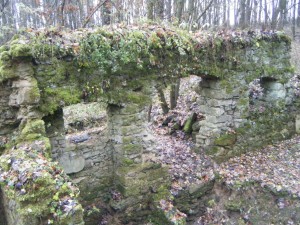
Part of a 14th century village, this house stood until the 1960’s, when the residents were forced to move because of its proximity to the German border. The University of West Bohemia recently excavated this home.
The opportunities for global scholars to partner with Czech colleagues are immense, and the groundwork laid by Pavel and his colleagues—and their commitment to work with international scholars—makes such work much more practical. Learning the history of a whole new place can be truly exciting, and living in places like Plzen can be much less expensive than many American cities. Liberated by Americans at the end of World War II, Plzen also is especially warm to American visitors today, and reminders of the Czechs’ appreciation for American troops are all over the present-day city. Many historical archaeologists bring methodological training, material culture training, and a commitment to public engagement that can expand central European archaeology significantly. The scholarship that can be explored in the Czech Republic and in global connections between Western Bohemia and North America are enormously important to expanding a truly global historical archaeology.
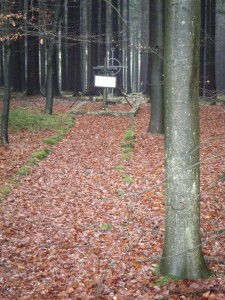
Western Bohemia had an exceptionally traumatic 20th century history. At the very close of World War II, prisoners from concentration camps were driven on desperate “death marches” that claimed one in four prisoners. During one of these marches, 37 people were killed and buried in this mass grave near the current Czech border; the grave was exhumed and the victims moved in 1946. Michal Rak and the University of West Bohemia directed recent excavations of the the site, recovering 22 shoes and a spoon in the former mass grave.
Next year the European Association of Archaeologists’s annual conference will be held in Plzen and hosted by the University of Western Bohemia, so for those who are curious to visit the region and see these exciting sites this will be a valuable chance to visit and to meet our post-medieval colleagues in central Europe and beyond. The world is covered with enormously fascinating places to do archaeology, and West Bohemia’s rich prehistory, medieval landscapes, and sobering wartime and communist heritage rank among those places to which historical archaeologists should turn.
Teaching and Teaching Portfolios in the Academic Job Search
By Stacey Lynn Camp, University of Idaho
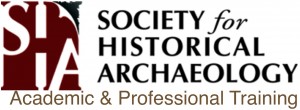
One of the biggest challenges of an academic job search is convincing a hiring committee that your skills and research interests are perfectly tailored to the advertised faculty position. Many advertised positions are ambiguous to begin with, with broad calls that span geographical and temporal specializations. Teaching responsibilities are also sometimes left to the applicant’s imagination, with the candidate charged with the task of deciphering what is expected of them in terms of their teaching and advising load.
Deciphering Teaching Expectations
If it is unclear what a university expects in terms of a teaching load (how many classes you will be expected to teach per academic year) or teaching pedagogy (how you approach teaching), you should spend a considerable amount of time looking into published material associated with the hiring department and its faculty on staff. This information can often be found on a department’s website, where course offerings are usually listed underneath a faculty member’s profile. At my institution, a number of faculty members in my department have published their teaching philosophies in teaching pedagogy journals.
One hint that teaching skills are prized at a university is a request for an applicant’s teaching portfolio, which can be made in the initial job announcement or requested from the applicant once they have made it through the first or second stage of the interview process. If, however, the job advertisement does not require extensive documentation of your teaching experiences, you should still take time to consider and research how many courses you will be teaching in the position, how many students you will be teaching in your courses, what courses you might be able or expected to teach in the department, the textbooks, book chapters, and articles you intend to assign as course texts, and the pedagogical strategies you will employ in the classroom.
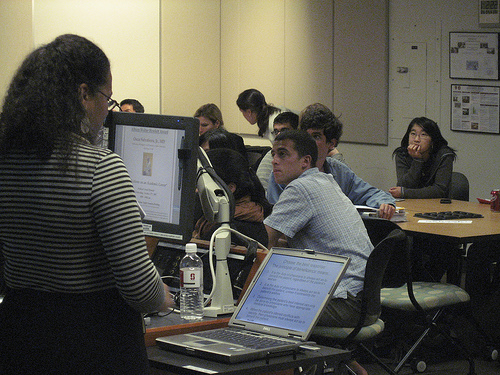 No matter where you interview, questions about your teaching will inevitably arise. Even at the most competitive research schools you will be expected to teach a few classes every year, and it is important that you think carefully about how you will undertake course instruction and employ the pedagogical values that you hold dear in the classroom.
No matter where you interview, questions about your teaching will inevitably arise. Even at the most competitive research schools you will be expected to teach a few classes every year, and it is important that you think carefully about how you will undertake course instruction and employ the pedagogical values that you hold dear in the classroom.
If you are one of the fortunate few who make it to the first or second round of interviews for the position, you should ask questions about the teaching and advising expectations and how those balance out with research and publication requirements of the position. These questions are important to the faculty hiring committee, as they show that the candidate has the foresight to consider what their responsibilities will be in this position.
Developing a Philosophy of Teaching
To demonstrate your commitment to teaching, you should consult publications on teaching pedagogy. There is ample literature on the topic that is both broad and discipline-specific in scope; at the very least, it is helpful to be aware of commonly utilized teaching strategies in academia and within the field of archaeology. Recently published literature within our own discipline includes Baxter’s Archaeological Field Schools: A Guide for Teaching in the Field (2009), Burke and Smith’s Archaeology to Delight and Instruct: Active Learning in the University Classroom (2007), and Mytum’s Global Perspectives on Archaeological Field Schools: Constructions of Knowledge and Experience (2012). Citing this literature in your teaching philosophy or mentioning it during interviews shows that you care about your students and you take the role of a faculty mentor and instructor seriously enough to read up on the subject matter.
When I applied for my current position as Assistant Professor of Anthropology at the University of Idaho, a teaching portfolio was part of the initial request for applications. My teaching portfolio comprised of qualitative and quantitative data from my teaching evaluations, letters of support from professors who supervised me as their teaching assistant, letters of support from former students, handouts and assignments from my classes, syllabi from courses I hoped to teach at the University of Idaho, examples of graded papers and my feedback on student assignments, a faculty member’s assessment of my teaching in the classroom. and, perhaps most importantly, my teaching philosophy statement.
I knew that the university was a second tier research institute, which meant that my teaching and research experiences would be equally valued in the hiring process. As a result, I spent a great deal of time writing and thinking about my teaching philosophy. The teaching philosophy should not merely be a descriptive compilation of your accomplishments (e.g. teaching awards, good student evaulations, training in teaching pedagogy, etc.); the hiring committee should be able to find that information on your Curriculum Vitae. Rather, your teaching statement should be a coherent, consistent narrative that describes how you approach teaching, how that approach aligns with your research and dissertation project, and how you see yourself evolving as a teacher over the course of the next five or six years as an assistant professor.
Look at the teaching philosophy as an opportunity to explore the ideas, concepts, and methodologies you desire to impart to your students. This involves a bit of self-reflection; some questions you should ask yourself are: what is it that has driven me toward a career in anthropology? What is it that intrigues me about this discipline? What are the two or three key points or methodologies I want students to know when they leave my classroom? How does my work intersect with other disciplines in meaningful and interesting ways? How can I make anthropology and archaeology relevant to non-anthropology majors?
An Example of a Teaching Philosophy in Historical Archaeology
Let me give you an example of how I answered these questions and composed a teaching philosophy that reflected my personal and academic research interests. What I have always liked about historical archaeology is its multiscaler approach to interpreting a site, a community, or a region. By comparing and contrasting multiple data sources, historical archaeologists can identify gaps in historical knowledge as well as discover contradictions between what is said in the documentary record and what is found in the archaeological record. I encourage students to be active participants in this discovery process by giving them data to analyze and deconstruct, and devote nearly half of my Introduction to Historical Archaeology course at the University of Idaho to critically analyzing and assessing the limitations and advantages of using different sources of information, such as photographs, maps, probate inventories, newspapers, oral histories, and, of course, archaeological assemblages.
Thinking critically about where data originated, who produced the data, and for what purposes the data was collected or written is not simply a skill limited to the practice of historical archaeology. In today’s media saturated world, it is crucial that students, as consumers of media, learn how to assess the intentions of media producers and the validity of the data cited by the media. So, to make a long story short, one of my primary teaching goals is to prepare students to be critical consumers of modern day media and to understand how to verify the authenticity of the media’s claims using the tools of historical archaeology. My course readings, my assignments, and my in-class discussions all work together to impart this skill set to students.
Defining Teaching Experiences
For some applicants, the very thought of organizing a teaching portfolio evokes fear and anxiety. This is perhaps especially true for applicants whose teaching experiences have been limited, comprising of undergraduate mentoring in laboratory or field school settings or serving as teaching assistants for classes. At the very least, you will be expected to demonstrate that you have already started to build a strong repertoire of teaching and mentoring experiences that will serve you well in a faculty position
Even if you have yet to teach your own course, you should not discount other types of interactions and “teaching moments” with undergraduates. These experiences come in many forms, such as working with lab assistants, directing field crews, mentoring and advising undergraduates, or serving as a teaching assistant and directing discussion sections. Much of what we do as archaeologists involves hands-on learning and instruction, but it is up to the applicant to draw connections between what initially may be viewed as atypical forms of instruction and classroom teaching.
Concluding Thoughts on Teaching Philosophies
If you are hired for the position, you will be thankful for devoting energy and time to fleshing out your teaching objectives and philosophy. Teaching statements are an essential component of faculty assessment. When I went up for my third year review at the University of Idaho, I revised and edited my teaching philosophy statement that I submitted as a job applicant. I will be revising it once again when I go up for tenure next year.
Thinking through your approach to teaching can also result in research and publication opportunities. I have written on teaching pedagogy in archaeology (Camp 2010), and how giving students the chance to do archaeology over the course of an academic year and outside of the traditional summer field school model can help solve real-world issues facing campuses.
Inspired by positive student responses to my integration of archaeological experience into the classroom setting, I continue to seek new and innovative ways of delivering course content to my students. From my perspective, then, the best teaching philosophies are ones open to student input, self-critique, and continual revision as one grows and matures as a teacher.
Works Cited
Baxter, Jane Eva (2009) Archaeological Field Schools: A Guide for Teaching in the Field. Walnut Creek: Left Coast Press, Inc.
Burke, Heather and Claire Smith (eds.) (2007) Archaeology to Delight and Instruct: Active Learning in the University Classroom. One World Archaeology Series. Walnut Creek: Left Coast Press, Inc.
Camp, Stacey Lynn (2010) Teaching with Trash: Archaeological Insights on University Waste Management, World Archaeology 42(3):430-42.
Mytum, Harold (ed.) (2012) Global Perspectives on Archaeological Field Schools: Constructions of Knowledge and Experience. New York: Springer.
Living Archaeology Weekend
Welcome to Living Archaeology Weekend in Kentucky! On the third weekend of September, every year, over 1500 people travel to the Gladie Learning Center in the Red River Gorge in Kentucky, to learn about technologies through time. The objective of Living Archaeology Weekend (LAW) is to provide a diverse, high-quality, multi-sensory educational opportunity in American Indian and Pioneer technologies and other lifeways, archaeological interpretation, and archaeological site preservation.
The Audience
Each year, the Friday of LAW is devoted to a target audience of over 800 5th graders from local and regional schools. In recent years, the steering committee developed teacher training workshops, pre-field trip classroom visits, and formal curriculum that can be used throughout the year. After their visit, students have the opportunity to enter an essay contest addressing the importance of preservation of cultural resources. The winning student receives accolades in the news, and pizza party for their class, and a set of classroom resources for their teacher.
On Saturday, LAW is open to the public and typically draws upwards of 900-1000 visitors. On both days, the demonstrations are held on the rolling acreage of the Gladie Learning Center. The native technology and lifeways demonstrations are set-up along a creek floodplain, and the pioneer technology and lifeways demonstrations are located at the Gladie Cabin.
The Experience
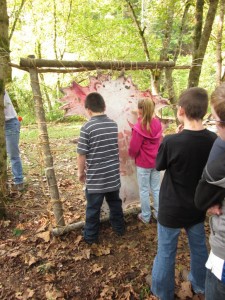 The Native Demonstration Area hosts a number of exciting technology demonstrations, including flintknapping, bow-arrow, fishing, blowguns, pottery making, stone bowl and pipe making, willow basket weaving, and cane mat weaving. Visitors can try their hand at spear throwing with an atlatl, cattail mat weaving, cordage making, and hide tanning. At the pump drill demonstration, visitors use flint-tipped drills to make their own shell and rock pendants.
The Native Demonstration Area hosts a number of exciting technology demonstrations, including flintknapping, bow-arrow, fishing, blowguns, pottery making, stone bowl and pipe making, willow basket weaving, and cane mat weaving. Visitors can try their hand at spear throwing with an atlatl, cattail mat weaving, cordage making, and hide tanning. At the pump drill demonstration, visitors use flint-tipped drills to make their own shell and rock pendants.
At the plant domestication demonstration, visitors learn about native crops, use native gardening technologies like digging sticks and shell hoes, and earn free packets of native squash seeds. Because the Red River Gorge is a World Hearth of Plant domestication, we have a demonstration on medicinal plant use on Friday. Learning about plants that were first domesticated in Kentucky, and how those plants were used for food, shelter, storage, and clothing is just one of the many experiences at LAW.
Other demonstrations focus on native arts and games. Visitors learn about cane flutes and listen to beautiful music. On Friday, members of the United Keetoowah Band of Cherokee Indians of Oklahoma lead students in the traditional stickball game. On Saturday, they demonstrate the Cherokee marble game and basket making.
Several of the pioneer demonstrations focus on corn, from farming and processing methods to tools and technology to crafts. At the spinning and quilting demonstrations, visitors can use drop spindles and tack a quilt. Students participating in Living Archaeology Weekend 2011 helped create a beautiful quilt for Community Hospice in Ashland, Kentucky. The blacksmith demonstrates methods of forging, melding, heat treating, and finishing. A longhunter recreator in period dress describes technology and trading on the early Kentucky frontier. Music demonstrations featuring traditional instruments celebrate the rich traditions of Appalachia.
The Gladie cabin, which was listed on the National Register of Historic Places in 1989, formerly served as a hotel, a post office, and a home before being moved to the Gladie Cultural-Environmental Learning Center. Stewardship and preservation are also a primary goal of the event, and visitors are invited to tour the Gladie Cabin and learn about the importance of site stewardship. This particular cabin has been furnished over time with collected materials from the community. Rather than interpret a particular period in the cabin, or take out modern materials, we decided to harness the teachable moment and, next year, ask the visitors to think critically about the cabin and to decide what items might not represent the cabin history accurately. Do you have ideas on more ways to interpret historic cabins?
Growing and improving
The steering committee is always brain storming ways to improve our materials and the experience. One oversight we recognized this year was that the connection between archaeology and the demonstrated technologies is not clear. One solution is to develop signage for each station noting clear, concise examples of archaeological signatures for each technology. We’d appreciate examples or suggestions below!
In addition to improving the actual event, we are constantly seeking new ways to attract educators in our region to the teacher workshop. If you have suggestions on reaching teachers and successfully attracting them to a certified training event, please let us know.
Support
LAW is made possible by a host of private sponsors and, in large part, by the Daniel Boone National Forest, the Kentucky Archaeology Survey, the Kentucky Organization of Professional Archaeologists, and the Kentucky Heritage Council. This year marked the 24th year of the event and we are proud to say that it gets better every year! Check out our website for more event details and links to education materials (www.livingarchaeologyweekend.org ).
SHA 2013: Trips and Tours
The conference program for the SHA 2013 conference in Leicester boasts a number of trips and tours; here is your opportunity to see more of Leicester and the surrounding area. You can register for these trips and tours, which take place on the days immediately before and after the conference, via the online conference registration website, or with the registration form enclosed with your latest copy of the SHA newsletter. All tours depart from the Mercure Hotel, in the centre of Leicester. Any tour that fails to register a minimum number of participants will be cancelled, and any moneys paid will be refunded to the registrant.
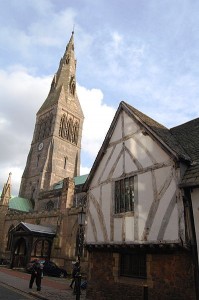 ‘City of contrasts’ – a walking tour of Leicester
‘City of contrasts’ – a walking tour of Leicester
Wednesday January 9, 2013. 11.00am to 3.30pm
Cost: $10.00; lunch is not included; there are many places to eat in Leicester City Centre.
Leicester is one of the most ethnically and culturally diverse cities in the UK outside London, with a rich urban heritage of archaeological sites and historic architecture. This walking tour led by local experts in Leicester archaeology and history will take participants through the city’s remarkable story from the Roman period to the 21st century. Leicester began life as a Roman provincial capital known as Ratae Corieltauvorum, and there are standing remains of a Roman building known as Jewry Wall next to Saint Nicholas’ church. The city was the county town in the medieval period, and the tour will include visits to medieval churches, the castle and the timber-framed guildhall. In the post-medieval period Leicester developed into a major industrial centre, and there are many fine 18th- and 19th-century houses, warehouses and commercial buildings to be seen. Leicester experienced dramatic growth in the 20th century with large scale immigration from South Asia, Uganda and the Caribbean among other places, and today has a rich cultural heritage of religious diversity and toleration, marked by the many Hindu, Sikh and Muslim places of worship across the city (not to mention fantastic international cuisine!)
NOTE – Participants should wear comfortable shoes for a day of walking.
‘If these pots could talk’ – the Staffordshire Potteries
Wednesday January 9, 2013. 8.30am to 4.30pm
$60.00; lunch included.
A visit to the Staffordshire Potteries which made many of the 17th and 18th century ceramics which are found on sites in the USA, such as creamware, salt-glazed stoneware, bone china and porcelain. See round the Gladstone Pottery Museum, one of the few surviving pot banks in the Potteries, where the processes from clay-processing to glazing, transfer printing and firing can be seen. Lunch will be taken at the Museum, followed by a talk from ceramics expert David Barker and a tour round the Potteries Museum and Art Gallery, with the finest collection of Staffordshire pottery in the world.
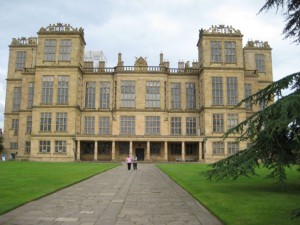 ‘More glass than wall’ – Hardwick Hall, Derbyshire
‘More glass than wall’ – Hardwick Hall, Derbyshire
Wednesday January 9, 2013. 9.00am to 4.30pm
$110.00; lunch included.
A unique opportunity for an exclusive visit to Hardwick Hall, a 16th century masterpiece and one of the finest historic houses in Great Britain. Created by Bess of Hardwick in the expectation of a visit from Queen Elizabeth I, its huge windows look out over the surrounding countryside of Derbyshire. The house is famous for having one of the best preserved Elizabethan interiors in Britain, with an extensive collection of original early modern furniture, decoration and textiles. A grand staircase takes visitors to the High Great Chamber with its great frieze of the virgin goddess and huntress Diana in a forest, an allusion to the virgin Queen Elizabeth. Participants will have the house to themselves, with a guided tour led by the National Trust’s House and Collections Manager at Hardwick. The visit will include a light lunch.
NOTE – as the house is not normally open to the public in January, it may be cold and participants should dress accordingly.
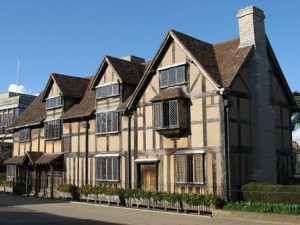 ‘All the world’s a stage’ – Stratford-upon-Avon, Warwickshire
‘All the world’s a stage’ – Stratford-upon-Avon, Warwickshire
Wednesday January 9, 2013. 9.00am to 4.30pm
$65.00; lunch included.
A special opportunity to visit Shakespeare’s home town of Stratford-upon-Avon, one of Britain’s most popular tourist destinations. As well as the famous attractions associated with Shakespeare’s life and family, Stratford-upon-Avon is a beautiful market town dating back to the medieval period, with a wealth of historic timber-framed buildings. Participants will visit the Shakespeare Birthplace Museum, where original 16th-century furnishings and interiors have been painstakingly reconstructed and will also have the opportunity to see Hall’s Croft (home of Shakespeare’s daughter) and Holy Trinity Church where the playwright is buried. In the afternoon they will receive a tour of the Guild Chapel and grammar school, which date back to the 15th century, where new research has reconstructed the original layout and decoration of the buildings.
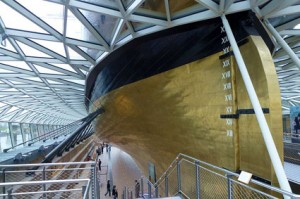 ‘Ship ahoy!’ – Maritime Greenwich and the Cutty Sark
‘Ship ahoy!’ – Maritime Greenwich and the Cutty Sark
Sunday January 13, 2013. 8.00am to 5.00pm
$115.00; lunch included.
Maritime Greenwich was designated a World Heritage Site in 1997, testimony to its central role in the development of British and European maritime power between the 17th and 19th centuries. The tour will visit the major attractions which make up the World Heritage Site: the National Maritime Museum, which is the world’s largest maritime museum with a remarkable collection representing 500 years of British maritime and naval heritage; the Old Royal Naval College, designed by Sir Christopher Wren; and the Royal Observatory, straddling the Prime Meridian and housing the famous Harrison timekeepers among other displays (http://www.rmg.co.uk/). Lunch will be provided. In the afternoon, the tour will visit the Cutty Sark, the last surviving 19th-century tea clipper and once the greatest and fastest sailing ship of her time. The ship re-opened in mid-2012 after extensive restoration (following a devastating fire) with a new exhibition centre, so this is a great opportunity to see an important piece of maritime heritage brought stunningly back to life.
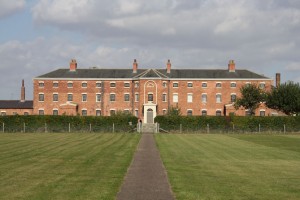 ‘Poverty and prayer’ – the Minster and Workhouse at Southwell, Nottinghamshire
‘Poverty and prayer’ – the Minster and Workhouse at Southwell, Nottinghamshire
Sunday January 13, 2013. 10.00am to 4.30pm
$60.00; lunch included.
A visit to one of the East Midlands’ hidden gems, the historic Minster town of Southwell, Nottinghamshire. Southwell is known to have been an important Roman centre, and in the Anglo-Saxon period the town was granted to the Archbishops of York, who established a major Minster church here. The Minster is a beautiful miniature Cathedral, with a 12th-century Norman nave and a 13th-century gothic chancel and chapter house, famous for its wonderful naturalistic sculpted decoration.The small town surrounding the Minster contains pretty Georgian houses and shops. Outside the town stands a more dismal element of Southwell’s history; in 1824, the first Union Workhouse in Britain was built here, which survives remarkably intact and is now owned by the National Trust. A grim building designed to segregate, punish and reform the ‘idle poor’, the Southwell Workhouse became the model for the notorious ‘New Poor Law’ of 1834, and the bleak interiors display attitudes towards poverty, homelessness and institutional life from the 19th century to the present day. For delegates with an interest in institutions of incarceration and reform, this tour provides a unique opportunity to experience life in one of the most influential punitive institutions of 19th-century Britain.
NOTE – as the Workhouse is not normally open to visitors in January it will be very cold, and participants should dress accordingly. Comfortable walking shoes should be worn.
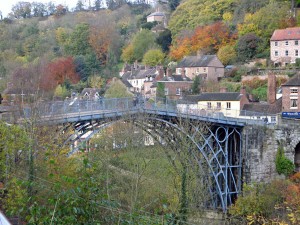 Ironbridge – Birthplace of the Industrial Revolution?
Ironbridge – Birthplace of the Industrial Revolution?
9.00am, Sunday January 13 to 4.30pm, Monday January 14, 2013.
Single occupancy $250.00; double occupancy $210.00 per person. Dinner, bed and breakfast included.
The Ironbridge Gorge was among the first group of UK sites to be designated as a World Heritage Site in 1988. The Quaker industrialist Abraham Darby first successfully smelted iron ore with coke here in 1700, and his grandson then built the world’s first cast iron bridge across the River Severn in 1779. The Coalbrookdale Company created one of the first industrial settlements with its terraced rows of housing, institutes, churches and chapels.
This two-day tour will visit all of the museums which are part of the Ironbridge Gorge Museum Trust. These include the open air museum of Blists Hill, the Coalbrookdale Museum of Iron, The Jackfield Tile Museum and Coalport China Museum with its splendid displays of bone china. Dinner and overnight accommodation in the Telford Golf Hotel and Resort. A highlight of the visit will be an early evening lecture from the Academic Director at Ironbridge, David de Haan. He is a leading expert on the 1779 iron bridge, to cross which even the Royal Family had to pay tolls, and he will also lead a tour to the bridge and its toll-house next day.
The World Archaeological Congress, January 14-18, 2013
http://wac7.worldarchaeologicalcongress.org/
Early registration ends October 20, 2013.
As members of the Society for Historical Archaeology, I would like to invite you to the Seventh World Archaeological Congress, held in Jordan from January 14 – 18 in 2013. WAC is a vital, diverse, non-governmental, not-for-profit organization which promotes world archaeology. It is our pleasure to remind SHA members that the WAC conference follows directly after the SHA conference in Leicester, UK (January 9-12) and that it is a relatively inexpensive flight away from the UK for attendees.
The World Archaeological Congress holds a dynamic, diverse, and international conference every four years, with a strong commitment to participation by indigenous and underrepresented voices. This Congress should hold particular interest for SHA members, as it is deeply involved in current issues that have near-universal importance in our profession.
Three sessions of particular interest to SHA members might be:
Session Title: Socially Sustainable Development
Organizers: Claire Smith, Flinders University, Australia and Sandra L.
Lopez de Varela, Universidad Autónoma del Estado de Morelos, Mexico
Throughout the world, cultural heritage is at risk, due to the pressures of development, population increases and urban growth. However, we lack much of the basic data and essential tools needed to address the ‘big picture’ challenges of heritage and development. We have not yet identified the most valuable ways of growing a workforce
around cultural heritage, or of building heritage capacity. We do not have the tools to evaluate the social and economic consequences of a loss of cultural heritage. Throughout the world, we are facing an irreversible loss of cultural heritage, without the data to understand what this might mean, not only in terms of lost pasts but also in
terms of lost futures.
This session will present case studies on ways to move forward. It will focus on how cultural heritage can be used to generate jobs, create a sense of connection between people, promote cross-cultural understandings, and contribute to social inclusion and wellbeing. It will present examples of new thinking around cultural landscapes,
development and communities; finding a balance between conservation and development; and using cultural heritage to sustain communities, especially in remote regions.
Decolonizing the Ranks: Using Indigenous and Decolonizing Pedagogies
in Teaching, Mentorship, and Training
Organizers: Sara L. Gonzalez (Carleton College), and Peter A. Nelson,
UC Berkeley (Federated Indians of Graton Rancheria)
Decolonization provides a process for thinking about the ways that our research can and does matter (and to whom?). It involves thinking through the wider implications of the craft of archaeology and examining how the process of interpreting and representing the past is both deeply meaningful and politically powerful. It also entails a willingness to think beyond the traditional scope of research, focusing not solely on the products or results of archaeology, but also on how the process of collaboration offers spaces to empower,
benefit, and advocate for communities. What results from asking a basic question—How and to whom will I make my research matter?—is something that is potentially transformative, for when we highlight our accountability to both discipline and community we change what the goal of science can and should be. Envisioned thusly, archaeology
becomes a tool for increasing our understanding of the past and our ability to empower individuals and communities through that knowledge.
In this session we will consider the role of decolonization in the classroom. We invite participants to examine how engaging with indigenous and/or decolonizing pedagogies has transformed the ways in which you train and mentor the next generation of heritage
professionals.
Heritage as a ‘common’: a novel perspective on the entanglements of
culture and economy
Prof. REINHARD BERNBECK, Freie Universität, Germany; PABLO ALONSO GONZÁLEZ,
University of Cambridge. UK; JOHANA CATERINA MANTILLA OLIVEROS,
University of los Andes, Colombia.
“The commons” has emerged in recent years as an exciting arena for the examination of multiple problematic ownership situations around the globe, and thus, of an exit from the simplistic dichotomy of “private” vs. “public” property. In the form of laws, the latter categories have wrought poverty and suffering on a globalized capitalist world.” Commons” can take multiple forms, from pre-industrial remnants in rural Europe to claims by Indigenous communities against Western corporate attempts to appropriate bio-knowledge in South America. Our symposium will discuss its implications in the field of heritage and archaeology. We encourage participants from around the world to share
their ideas in theoretical and empirical papers on the connections between archaeology, heritage and property relations, addressing questions such as:
- Could “the commons” provide a way out of problematic issues of ownership and the public/private dichotomy?
- What is the potential of “the commons” in the fight against the commodification of heritage?
- How can the notion of a “shared” heritage be mobilized by local communities to implement politics of redistribution and rethinking of ownership against an alienated “world heritage” that frames itself as globally “shared” common heritage of humanity?
- What are consequences of heritage as a commons for identity politics?
Early registration for WAC ends October 20th, register now!
http://wac7.worldarchaeologicalcongress.org/
We sincerely hope that you will consider participating in WAC-7!
SHA 2013: Public Archaeology event
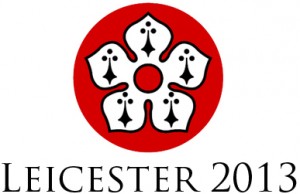 The Past Beneath Your Feet: archaeology and history in Leicestershire
The Past Beneath Your Feet: archaeology and history in Leicestershire
In addition to a three-day academic programme the Society for Historical Archaeology’s 2013 conference will include a free, public programme of events, to be held at Leicester University on the afternoon of Saturday 12th January.
The event will feature three headline public lectures, re-enactment performances, living history displays, archaeological exhibits, interactive and educational activities (delivered by Leicester University’s student outreach team), and stands containing information from local and national archaeology and history societies. The Portable Antiquities Scheme will be present so if you are from the local area and have a ‘find’ why not bring it along to be identified and logged on the national database?
There will be something of interest for everyone – from the youngest child to the oldest adult – and the event will showcase the depth and richness of Leicestershire’s archaeological heritage, representing a diversity of peoples, places, and events.
The provisional timetable for the afternoon’s events is as follows:
Public lectures (Peter Williams Lecture Theatre, Fielding Johnson South Wing)
12pm-1pm: Prof. Francis Pryor MBE FSA: The prehistory of the recent past
2pm-3pm: Dr Carenza Lewis FSA: Disaster Recovery? Reconstructing the impact of the Black Death from mini-digs in medieval villages
4pm-5pm: Dr Kevin Leahy: Historical archaeology and the Portable Antiquities Scheme: the Staffordshire Hoard and other bits and pieces
Archaeology and history exhibition (O2 Academy at the Percy Gee Students Union)
Confirmed exhibitors so far include:
– Re-enactors
– National organisations: National Trust, English Heritage
– Leicestershire museums: Jewry Wall Museum, Belgrave Hall, Guildhall, Snibston, Bosworth, Donnington-Le-Heath Manor House, Sir John Moore Foundation, Heritage Forum, Leicester County Council Parks
– Local archaeology and history societies: Archaeological Fieldwork Group; Leicestershire and Rutland Family History Society, Great Bowden Archaeology and Heritage Group, Friends of Jewry Wall, Croft Heritage Group, Vaughan Archaeological & Historical Society, Friends of Grace Dieu, Leicestershire Industrial History Society, Leicestershire Victoria County History Trust, Wigston Historical Society
– National archaeology groups: Portable Antiquities Scheme, Young Archaeologists Club
– University of Leicester: School of Archaeology and Ancient History (distance learning and campus-based education programmes), University of Leicester Archaeological Services (ULAS), Department of Genetics, Archaeology and Ancient History student outreach team.
Biographies of speakers
 Dr. Carenza Lewis is an archaeologist based at the University of Cambridge. She is widely recognised for her 13-year stint on the innovative, long-running and award-winning Channel 4 archaeological series Time Team, and more recently for her involvement in Michael Wood’s The Great British Story (BBC). Outside of her television appearances, Carenza has long-standing research interests in settlement development in medieval England and since 2004 has developed and co-ordinated the Access Cambridge Archaeology programme at the University of Cambridge. The aim of this programme is to enhance educational, economic and social wellbeing through active participation in archaeology. It seeks to achieve this by running novel, fun and challenging activities for members of the public, including school pupils, to develop new skills and confidence; raise their educational aspirations, boost their academic performance; enjoy learning for the love of it; take part in new archaeological excavations and make new discoveries about themselves and the world around them.
Dr. Carenza Lewis is an archaeologist based at the University of Cambridge. She is widely recognised for her 13-year stint on the innovative, long-running and award-winning Channel 4 archaeological series Time Team, and more recently for her involvement in Michael Wood’s The Great British Story (BBC). Outside of her television appearances, Carenza has long-standing research interests in settlement development in medieval England and since 2004 has developed and co-ordinated the Access Cambridge Archaeology programme at the University of Cambridge. The aim of this programme is to enhance educational, economic and social wellbeing through active participation in archaeology. It seeks to achieve this by running novel, fun and challenging activities for members of the public, including school pupils, to develop new skills and confidence; raise their educational aspirations, boost their academic performance; enjoy learning for the love of it; take part in new archaeological excavations and make new discoveries about themselves and the world around them.
 Professor Francis Pryor has been a British archaeologist for over forty years, having excavated several major sites, mostly in the Fens of eastern England. He is famous for his role in the discovery of Flag Fen, a Bronze Age archaeological site near Peterborough. Francis has now retired from full-time field archaeology, but still appears on television and writes books as well as being a working farmer. His specialties are the Bronze and Iron Ages, to which he brings a unique perspective as a working farmer. Francis has tried to bring archaeology to a wider audience, with a number of books, radio and television programmes, including Channel 4’s Time Team and Britain AD.
Professor Francis Pryor has been a British archaeologist for over forty years, having excavated several major sites, mostly in the Fens of eastern England. He is famous for his role in the discovery of Flag Fen, a Bronze Age archaeological site near Peterborough. Francis has now retired from full-time field archaeology, but still appears on television and writes books as well as being a working farmer. His specialties are the Bronze and Iron Ages, to which he brings a unique perspective as a working farmer. Francis has tried to bring archaeology to a wider audience, with a number of books, radio and television programmes, including Channel 4’s Time Team and Britain AD.
 Dr. Kevin Leahy. Before starting in archaeology Kevin trained as a foundry engineer and remains interested in metals. He read archaeology at Leicester and then spent twenty-nine years as archaeologist at the North Lincolnshire Museum. While at the Museum he excavated some important Anglo-Saxon sites including the Cleatham cemetery, which formed the basis of his Nottingham PhD. He started recording metal detector finds more than thirty years ago when he saw how ploughing was destroying sites. Kevin has written a number of books including ‘Anglo-Saxon Crafts’, ‘The Anglo-Saxon Kingdom of Lindsey’ and ‘Interrupting the Pots; Excavation of Cleatham Anglo-Saxon Cemetery’. Retiring from the museum in 2007 he now works part-time for the Portable Antiquities Scheme (PAS), as a National Finds Advisor covering the early medieval period but also assisting with flint and stone. Whilst with the PAS he was responsible for the first catalogue of the great Staffordshire Hoard of Anglo-Saxon treasure, a project with which he remains involved. He is also working on Anglo-Saxon tools hoards and Irish metalwork from England.
Dr. Kevin Leahy. Before starting in archaeology Kevin trained as a foundry engineer and remains interested in metals. He read archaeology at Leicester and then spent twenty-nine years as archaeologist at the North Lincolnshire Museum. While at the Museum he excavated some important Anglo-Saxon sites including the Cleatham cemetery, which formed the basis of his Nottingham PhD. He started recording metal detector finds more than thirty years ago when he saw how ploughing was destroying sites. Kevin has written a number of books including ‘Anglo-Saxon Crafts’, ‘The Anglo-Saxon Kingdom of Lindsey’ and ‘Interrupting the Pots; Excavation of Cleatham Anglo-Saxon Cemetery’. Retiring from the museum in 2007 he now works part-time for the Portable Antiquities Scheme (PAS), as a National Finds Advisor covering the early medieval period but also assisting with flint and stone. Whilst with the PAS he was responsible for the first catalogue of the great Staffordshire Hoard of Anglo-Saxon treasure, a project with which he remains involved. He is also working on Anglo-Saxon tools hoards and Irish metalwork from England.
Missed Opportunities: Engaging Adults at Public Archaeology Days
 Last week, Melissa Timo’s excellent blog discussed how the second annual celebration of National Archaeology Day is taking place at a time when public education and outreach in archaeology is more important than ever before. In the current fiscal climate, budget cuts have dealt harsh blows to historic preservation agencies, including the well-publicized recent closing of the Georgia State Archives and cuts to Parks Canada. At the same time, there has been a great deal of discussion within the archaeological community regarding the appropriate response(s) to several artifacts-for-profit themed television shows (on the SHA Blog, it has been discussed many times). Now more than ever, it is important to think critically about how we are engaging the public and to what end.
Last week, Melissa Timo’s excellent blog discussed how the second annual celebration of National Archaeology Day is taking place at a time when public education and outreach in archaeology is more important than ever before. In the current fiscal climate, budget cuts have dealt harsh blows to historic preservation agencies, including the well-publicized recent closing of the Georgia State Archives and cuts to Parks Canada. At the same time, there has been a great deal of discussion within the archaeological community regarding the appropriate response(s) to several artifacts-for-profit themed television shows (on the SHA Blog, it has been discussed many times). Now more than ever, it is important to think critically about how we are engaging the public and to what end.
Archaeology days, in all their various permutations, have been a main point-of-contact between archaeologists and the general public. As an archaeologist/educator/mom, I have taken my family to several archaeology-themed public events; and—as a mom—I am totally thrilled when I see my girls really excited and interested in hands-on educational activities. As an educator and archaeologist, I tend to look a little more critically at the exhibits presented and the objectives of the activities. This, in addition to my husband’s stated impression that many presenters often seem more focused on informing other archaeologists about their work, has recently led me to consider the overall objective of public archaeology events.
In discussing this blog with my husband—my ‘representative sample’ of the general public—he said it was his impression that, although archaeologists clearly are passionate about their work and are trying to communicate their discoveries, they often leave out portions that would make it accessible to the public. I think it’s likely that my husband’s impressions from a variety of public archaeology day events represent the message unintentionally being sent to the majority of the general public. This is something we should seriously consider, especially since many of these public education events take place at major tourist sites or museum facilities. What terrific venues and terrific opportunities to inform a large audience about the importance of context, the precision of the work we do, the science of archaeology!
It seems, with the prevalence of television shows glorifying the more lucrative aspects of antiquities and artifacts, we should be trying to communicate some important messages to the general public, including an emphasis on the importance of preserving context through the use of appropriate scientific methodology and the knowledge that can be gained from everyday “garbage”—the kinds of artifacts, like ceramic sherds or faunal remains, that most for-profit shows would disregard completely. At every public archaeology event I’ve attended, there have been lots of hands-on activities meant to engage kids and excite them about archaeology—but are we engaging and educating the adults in equal fashion? I’m not sure we as professionals give a great deal of thought to the outcomes of our programs, especially in regards to what key ‘take away’ points are being communicated to adults. Perhaps the main questions we should be asking are: what should the overall message of a public archaeology day be? What do we want the public to learn? It is easy to engage kids in excavation activities, but how are we engaging the adult participants?
As an Educator for the Museum of the Grand Prairie here in Mahomet, Illinois, I had an opportunity recently to implement some of these ideas. I was asked to coordinate archaeology activities for our annual Prairie Stories fall event, which in this case meant tying the activities to the Museum’s mission of interpreting the natural and cultural history of Champaign County and East Central Illinois.
With Susan Kooiman’s guidance, children were encouraged to sort their “finds” into categories and record the artifacts by counting and drawing them on sheets of paper.
We used archaeology activities in part to discuss with our audience how we use archaeology to learn about people who have lived in our region in the past. Some colleagues from the Illinois State Archaeological Survey (ISAS) kindly leant their assistance, as well, and with their help we were able to present quite a comprehensive picture of archaeological methodology.
With Susan Kooiman’s guidance, children were encouraged to sort their “finds” into categories and record the artifacts by counting and drawing them on sheets of paper.
We included several hands-on activities aimed at a young audience, including an excavation activity where children could record their “finds” and a hugely popular “washing artifacts” activity.
My younger daughter assists at the “washing artifacts” activity. (Having spent hours in the lab washing artifacts, I never would have thought it an interesting job, but at my daughters’ suggestion I included it. Of course, it was one of the hits of the day!)
However, many of the posters and displays at other stations were meant to engage and inform adults, as well. A seed-sorting activity which included corn, pumpkin, bean, and sunflower seeds with accompanying displays gave adults an opportunity to read and learn about archaeobotany while their children identified and categorized seeds that might have been used by local indigenous peoples. Flintknapping and faunal stations displaying how indigenous groups in the region used natural resources provoked discussion about experimental archaeology, while an activity allowing the general public to try an atlatl (spear-throwing tool) allowed adults as well as older kids an opportunity for some hands-on learning.
Steve Keuhn teaches my daughter how to use an atlatl to throw a replica spear.
A mending activity also engaged both adults and children, while offering an opportunity to discuss the importance of context and the value of commonplace artifacts in learning about their past owners’ everyday lives, while an excellent display from ISAS used stacking trays to illustrate stratigraphy, showing various occupation levels from the Archaic Period through the present day.
We sanded the edges of modern ceramics for a mending activity that appealed to both adults and children.
Eve Hargrave, Public Engagement Coordinator for ISAS, explains stratigraphy to a family group.
Overall, I think we worked hard to engage both adults and children about what we do as archaeologists, and why our work is important. I think most people enjoyed themselves; it is my hope that they also left thinking about the science of archaeology and the careful precision with which we do our work. In planning the archaeological portion of the event, I wish I’d started with more specific outcomes in mind. I would have liked to provide information for the public on how they can get involved in archaeology locally and how to report a find. To this end, I think next year’s event should include representatives from the Illinois Association for the Advancement of Archaeology, an association of both professional and avocational archaeologists, to spread the word about how interested citizen-scientists can learn about and participate in local archaeological activities.
Reflecting on this activity has also allowed me to identify some goals in working towards future public archaeology events. These overall goals include clearly stated objectives like: 1) explaining how participants can get involved in local archaeology, 2) identifying steps private landowners should take if artifacts are found, and 3) educating participants about the scientific methodology archaeologists use to preserve information and context. A holistic presentation meant to tie together the individual displays might help to give context to individual hands-on activities and presentations, as well.
What are your thoughts? How has your organization approached public education and outreach events? Do you think it’s important to identify learning objectives for the general public? Please let me know your ideas in the comments below!
SHA 2013: Registration now open!
 Registration for the Society for Historical Archaeology’s 46th Annual Conference on Historical and Underwater Archaeology, to be held in Leicester, UK, on 9th – 12th January 2013 is now open!
Registration for the Society for Historical Archaeology’s 46th Annual Conference on Historical and Underwater Archaeology, to be held in Leicester, UK, on 9th – 12th January 2013 is now open!
Conference registration is via the Conftool website, where you can also register for the many special events, receptions, round table luncheons, training workshops, trips and tours, and the Conference Banquet and Awards Ceremony. You can also plan your time in Leicester by viewing the conference program.
Discounted registration fees are available for delegates who are members of the Society for Historical Archaeology or its sister organization the Society for Post-Medieval Archaeology, and the first fifty members of SPMA to sign up for the conference will also have the opportunity to join SHA for a one-off special price of $20. Here are the Early Bird registration rates, which will apply until 3rd December:
– Member of the SHA or SPMA: $180
– Non-members: $280
– Student member of SHA or SPMA: $85
– Student non-member: $140
– Guest (includes entry to free events, but not paper sessions): $50
All the information you need to arrange your trip to Leicester, including travel and accommodation is located on the conference webpage, along with details of how your organization can assist with the running of the event by taking advantage of conference sponsorship opportunities, and exhibiting products and services in the conference bookroom.
The SHA and the local conference organising committee in Leicester will continue to make full use of social media in the run up to, and during, the conference; as well as this blog and the conference webpage, you will be able to follow the latest news on Twitter (#SHA2013) and Facebook, especially the conference event page.
If you have any questions regarding the conference or the registration process, please do not hesitate to contact us by emailing sha2013leicester@gmail.com
We look forward to meeting you all for an exciting, stimulating conference in Leicester in January 2013!
National Archaeology Day 2012
 On Saturday, October 20, 2012 archaeology enthusiasts will have a chance to participate in a nationwide suite of events during the second annual National Archaeology Day. Not to be confused with the digital media-flavored bonanza that was Day of Archaeology, National Archaeology Day seeks to connect locals directly to professionals, organizations, and museums through vibrant personal experiences. This wonderful celebration of all things archaeology is a fantastic opportunity to highlight local resources, reaffirm an institutional commitment to public outreach, or delve into public programming for the very first time.
On Saturday, October 20, 2012 archaeology enthusiasts will have a chance to participate in a nationwide suite of events during the second annual National Archaeology Day. Not to be confused with the digital media-flavored bonanza that was Day of Archaeology, National Archaeology Day seeks to connect locals directly to professionals, organizations, and museums through vibrant personal experiences. This wonderful celebration of all things archaeology is a fantastic opportunity to highlight local resources, reaffirm an institutional commitment to public outreach, or delve into public programming for the very first time.
The Archaeological Institute of America (AIA), instigator of National Archaeology Day, has identified three overarching goals including: raising awareness of archaeology as a discipline and a resource; emphasizing the universality of archaeological resources, including those right in our “backyards;” and uniting the archaeological community through a focal event (Thomas and Langlitz 2012). At the time of this writing, almost 100 collaborating organizations (up from the 2011 inaugural year’s 14) will be promoting the day’s activities from across the United States and Canada, and in places as far away as Australia, Cyprus, Romania, Germany, and Ireland (Archaeological Institute of America 2012). Here in the States, AIA has been joined by the Society for Historical Archaeology, the U.S. Bureau of Land Management, the Society for American Archaeology, the U.S. National Park System, and many more organizations in nearly every state to raise awareness and provide avenues through which the public can get their hands dirty in the archaeology beneath their feet. Last year’s activities included classroom visits, symposia, conferences, archaeology fairs, student presentations, lab open houses, and lectures (Archaeological Institute of America 2012).
As an Outreach Coordinator for the Florida Public Archaeology Network, I attempted to step out of my zealous outreach shoes to weigh the benefits of such a day for those who are less publicly inclined. Relating the intricacies of the archaeological process to the general populace is not always easy or even instantly gratifying. However, no one can deny that in this current economic and pedagogic climate it behooves us to try.
Now, more than ever, the archaeological community needs to inspire. Such a lofty goal may not be as hard as you think. A perusal of the more than 400 events listed on the AIA’s National Archaeology Day events calendar include such things as a display of Pennsylvania State Museum and Society for Pennsylvania Archaeology’s dugout canoe in Hamburg, Pennsylvania and a tour of the Dragonfly Petroglyph Site sponsored by the Grant County Archaeological Society and Gila National Forest. The AIA in Kansas City will be offering a talk entitled “Spying on the Past: Satellite Imagery and Archaeology in Southern Mesopotamia.” The Knife River Indian Villages National Historic Site’s Archaeology Day includes collections tours, lectures, kid’s activities, special exhibits and more. We at the southwest region of Florida Public Archaeology Network plan to offer a Project Archaeology teachers’ workshop, so that educators can bring structured archaeology curriculum into their classrooms. A whole range of activities and events fall well within the scope of National Archaeology Day’s premise and are sure to appeal to a wide array of tastes and interests.
What inspired you to dive into archaeology? Was it a museum visit? Was it a trip to a lab or an archaeological site? Did you hear one awesome lecture that stimulated your thirst for more? We, as professionals “in the know,” are in the position to create great change. Passion comes from knowledge and knowledge comes from sharing. By inspiring and educating, we can reshape (albeit, sometimes on a painfully slow pace) public opinion and, most importantly, public support of our beleaguered cultural and archaeological resources. All it takes is to go back to that one “aha!” moment that led you to where you find yourself today.
I feel another important emphasis is National Archaeology Day’s tenant to unite the archaeological community under a focal event. We may sometimes feel as though our institutions are lone archaeo-bubbles awash in a cultural vacuum. I see Archaeology Day as a perfect opportunity to reach out to the institutions around you. Why not join up with the county museum, the historical house museum, or the battlefield site near you to put on an archaeology activity or a lecture series? Bigger events that draw more visitors are more feasible when multiple parties come together under one overarching flag.
Excited? Interested in joining the fun? There is still time for you or your institution to sign on. Fortunately for us all, the AIA National Archaeology Day website has everything tied together neatly. Submit your group’s name to become a Collaborating Organization or donate to the cause by becoming a Sponsor.
Too late for you to plan and promote an activity for 2012? Check out the Calendar of Events and blog for opportunities near you to help you plan for next year! National Archaeology Day is also on Facebook and Twitter. Make sure to use the hashtag #NatlArkyDay while tweeting from one of the amazing National Archaeology Day events!
It is heartening to see how well received National Archaeology Day has been. I find it to be a positive sign of things to come, despite our current institutional concerns. Will you be participating in National Archaeology Day? How will you be participating? Can you translate your archaeological “aha!” moment for a new audience? Do you think that events like National Archaeology Day have the power to inspire a long-term shift in support for archaeological and cultural resources and institutions?
If you are participating, please share with us in the comments below, on our Facebook Page, or send us a message on Twitter. We’d love to hear about it, and to let other people know about how historical archaeology will be represented!
Bibliography
- Archaeological Institute of America
- 2012 Information for Collaborating Institutions. National Archaeology Day. <http://www.archaeological.org/NAD/CollaboratingOrganizationInfo>. Accessed 5 Sept. 2012.
- Ben Thomas and Meredith Anderson Langlitz
- 2012 Public outreach through National Archaeology Day. The European Archaeologist, 37. European Association of Archaeoleogists <http://e-a-a.org/tea/rep4_37.pdf>. Accessed 12 Sept. 2012.




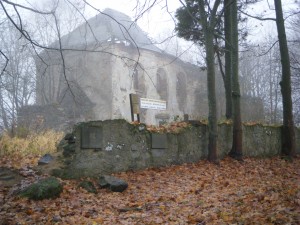
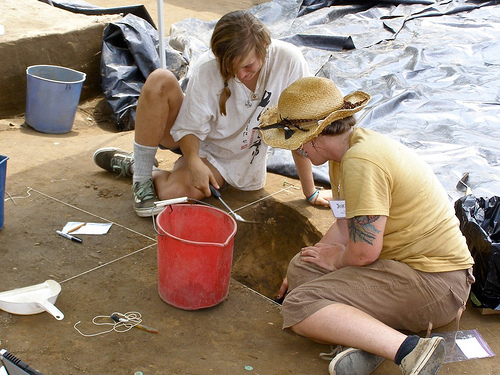
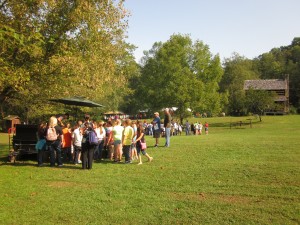
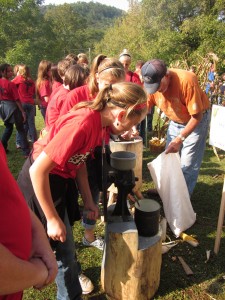
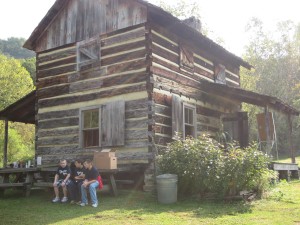
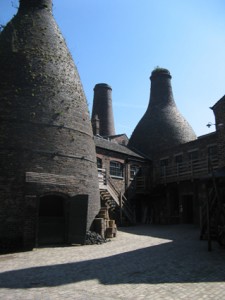

Pingback: WAC May 2012 eNewsletter – Volume 40 – World Archaeology Congress